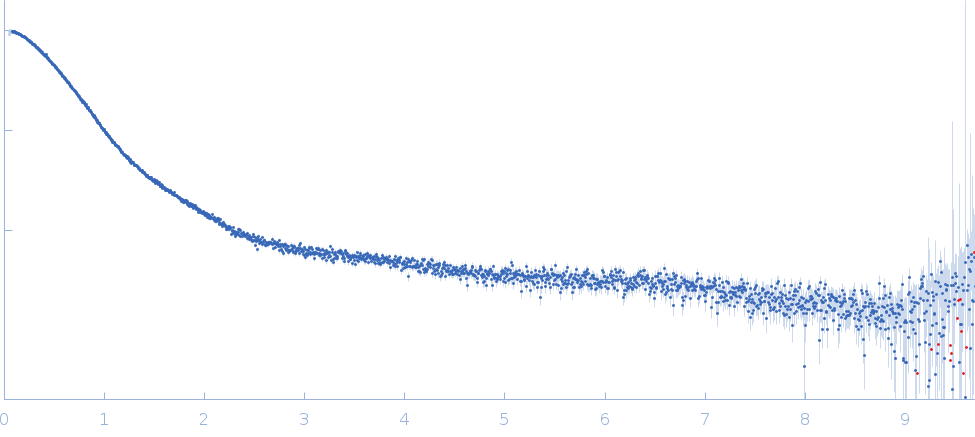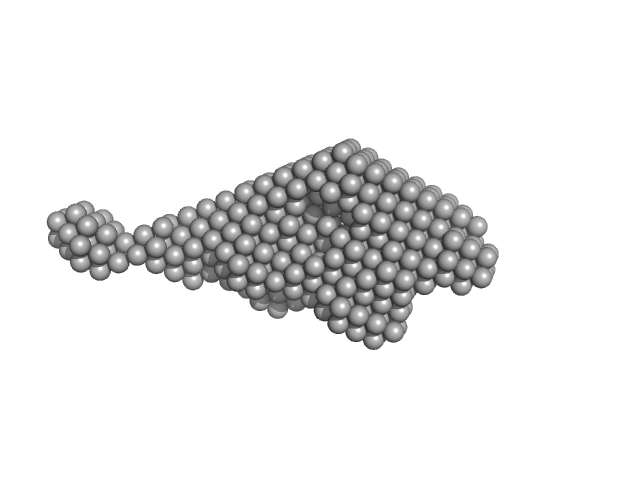|
Synchrotron SAXS data from solutions of human testican-2 (residues 23-379) in 20 mM Na-HEPES, 130 mM NaCl, 5 % (v/v) glycerol pH 7.4, was collected at the EMBL P12 beamline of the Petra III (DESY, Hamburg, Germany) using Pilatus 2M detector at a sample-detector distance of 1.6 m and at a wavelength of λ = 0.124 nm (I(s) vs s, where s = 4πsinθ/λ, and 2θ is the scattering angle), at room temperature (20°C).
The data was normalized to the intensity of the transmitted beam and radially averaged, and scattering of the solvent-blank was substracted. Data was extrapolated to zero concentration.
Number of frames = UNKNOWN
|
|
 s, nm-1
s, nm-1
